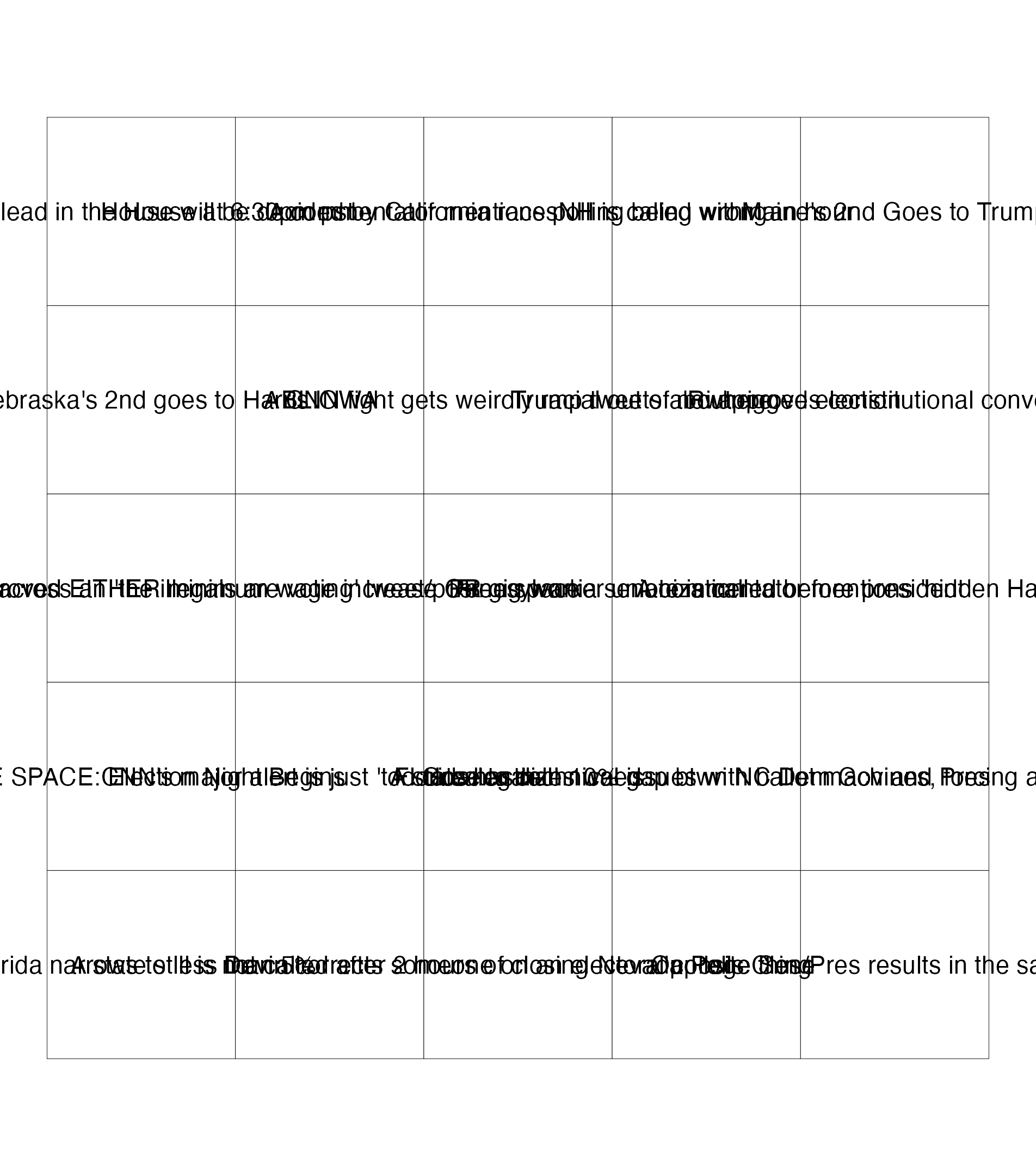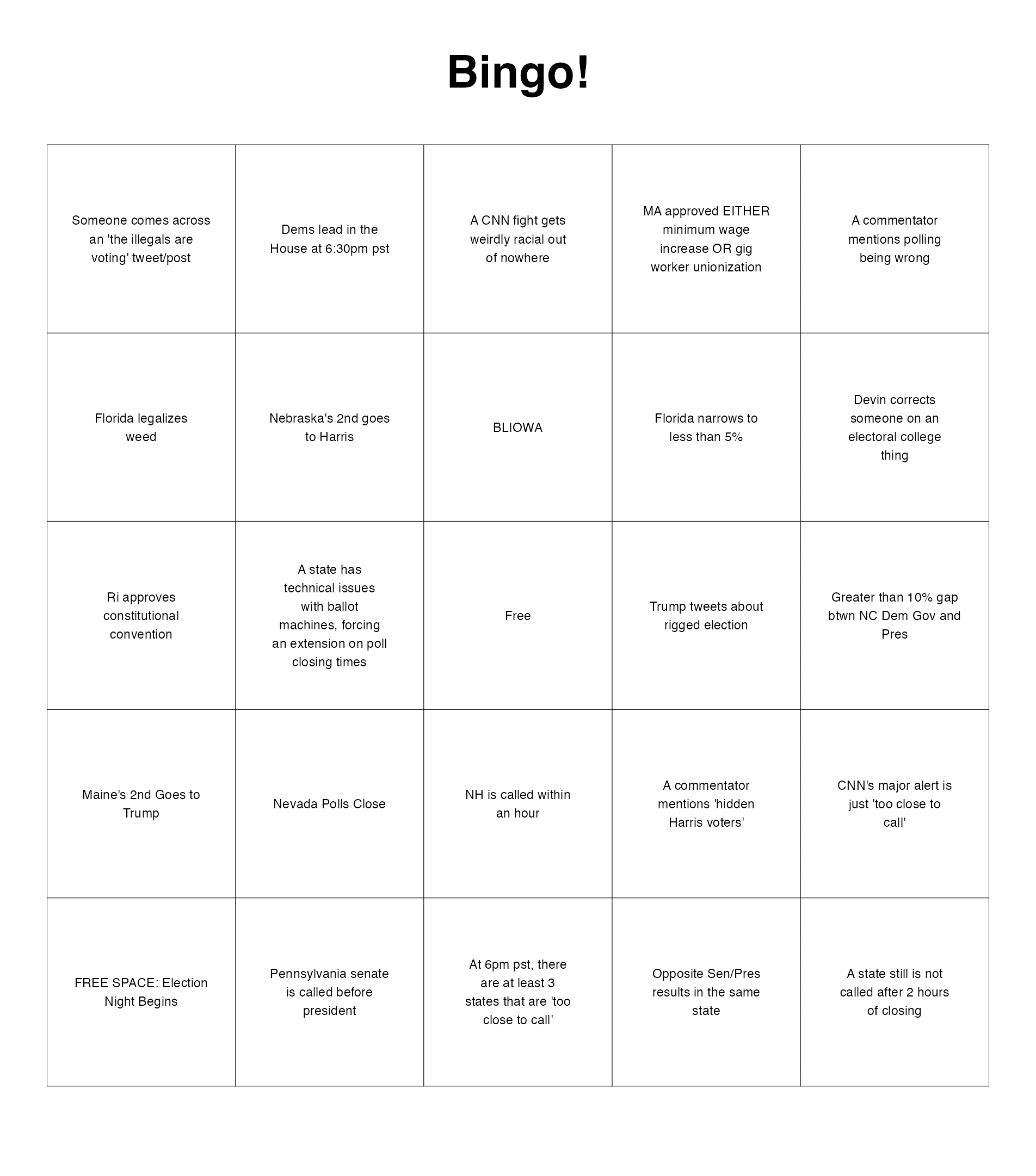- Published on
How to Make a Bingo Card in R
- Authors

- Name
- Kevin Navarrete-Parra
Table of contents
Introduction
I recently found myself wanting to make a few bingo cards for an election day game night with some friends. We had a list of options that would go on the cards, but we didn't have a way to generate the cards themselves. I'm sure there's a website out there that would do it easily, but I thought it would be fun to see if anyone has tried doing this in R. After all, you can make just about anything in ggplot2, so why not bingo cards?
I did a quick search and found some interesting code on R Bloggers that made things similar to bingo cards as well as an R package by Jenny Bryan and Dean Attali, the code for which can be found on GitHub. However, I also found a simple blog post by Quang Nguyen that provided a straightforward way to make bingo cards using ggplot2. I decided to use his code as a starting point for my bingo cards.1
Creating the Bingo Card
The first step was to run Nguyen's code to see what the bingo cards would look like. His original code is as follows:
library(tidyverse)
# replace this with whatever you're interested in
str <- letters
set.seed(1)
tibble(what = sample(str, 25),
row = rep(1:5, 5),
col = rep(1:5, each = 5)) %>%
mutate(what = ifelse(row == 3 & col == 3,
"Free space", what)) %>%
ggplot(aes(row, col)) +
geom_tile(color = "black", fill = "white") +
geom_text(aes(label = what)) +
coord_fixed() +
theme_void()
The code ran well, generating a 5x5 plot with random letters in each cell. Morover, the center cell was labeled "Free space", which is a useful feature. However, when I ran the code with my bingo card options, I found that the unformatted text was too large for the cells, leading to significant lack of readability. After some experimentation, I adjusted the font size, added some text wrapping, and updated some of the formatting to make the cards more to my liking.
The output looked like this:

As you can see, the card is fairly illegible, which is not ideal. However, after some tweaking, I was able to generate a card that looks like this:

I used the stringr package to wrap the text and I added additional facets to the ggplot2 code to make the cards more to my liking. Despite being quite pleased with the final product, I wanted to take things a step further by making a bingo card generating function I could use for future game nights.
Making a Bingo Card Generator
I started by wrapping the code above in a function that would take a character vector as an argument to fill the cells. As I progressed, though, I realized that I could make the function more flexible by allowing the user (in this case, me) to specify a series of arguments that would control the card's appearance.
Ultimately, I ended up with the make_bingo function, which you can find in my personal utility package, kevinsRepo. The final product allows the user to specify the text wrapping, font size, and title, among other things. More importantly, it offers a simple, yet effective way to generate bingo cards for any occasion while adding a greater level of customization than the original code. To generate a test bingo card, simply run:
devtools::install_github("KevinNavarreteParra/kevinsRepo")
library(kevinsRepo)
make_bingo(letters)
I hope you find this function as useful as I do!
Footnotes
I did this instead of using the extand Shiny app provided by Jenny Bryan's and Dean Attali's
bingopackage because I wanted to have more granular control over the cards' appearance. ↩